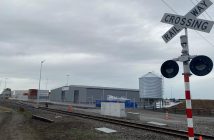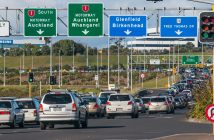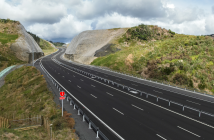OPINION
“The National Land Transport Programme announced August 31 sees a significant shift in the allocation of road user charges and fuel taxes away from road users to public transport users and raises questions about the future of the state highway network,” says Infrastructure New Zealand Chief Executive Stephen Selwood

“Many city dwellers will welcome the Government’s positive focus on public transport, walking and cycling. And while road users will be pleased with the focus on safety, they will be scratching their heads wondering where their Road User Charges (RUC) and Fuel Excise Duty (FED) payments are going.
“State Highway capital expenditure is down $630m (18 percent) on the previous three years expenditure. This is a major concern noting that vehicle kilometres travelled on state highways is increasing rapidly – up one billion kilometres (5 percent) just last year.
“Coupled with the Government’s Policy Statement for transport which sees state highway capital investment halved from a peak of $1.4 billion in 2018/19 to just $600m by 2025, this represents a major shift in transport funding away from road to public transport users.
“If vehicle kilometres travelled on the state highway network continue to grow in the next decade as they have in the last decade (and all evidence suggests this will be the case) then we are likely to face a significant state highway infrastructure deficit in coming years.
“Such a trend will increase the likelihood of another radical shift in transport prioritisation with the next change of government.
“The good news is that local and regional road improvements are up in today’s announcement, as is road maintenance across state highways and local roads, all of which will be welcomed by road users especially in the provinces.
“Expenditure on road safety promotion and demand management is up 79 percent and road policing up by 10 percent on previous years so transport users can expect to see a lot more advertising on media channels and police on the roads.
“But the major gain is investment in public and rapid transit and walking and cycling which more than doubles from $1.2 billion expenditure on the last three years to $2.5 billion this time around.
“It is good to see this investment happening, but much more needs to be done to capture value from public transport beneficiaries.
“The Government’s focus on increased density and improved public transport will, perversely, increase the value of urban land, driving up the cost of housing and transport investment.
“Price signals are required to ensure our transport system remains fundable and that the beneficiaries of policy pay their fair share.
“It is clear that new funding and financing mechanisms are required to keep up with sorely needed investment in transport,” Selwood says.




